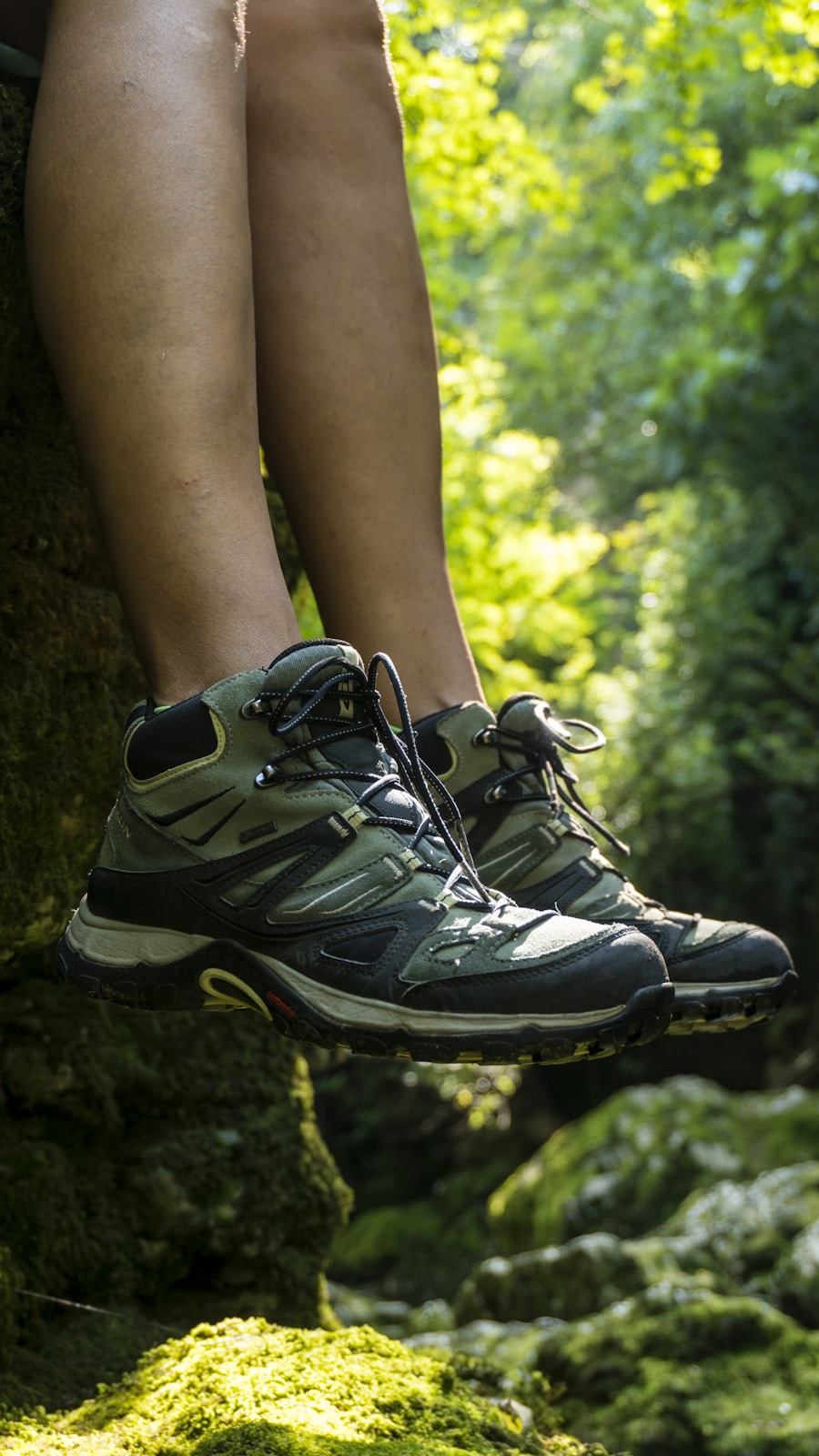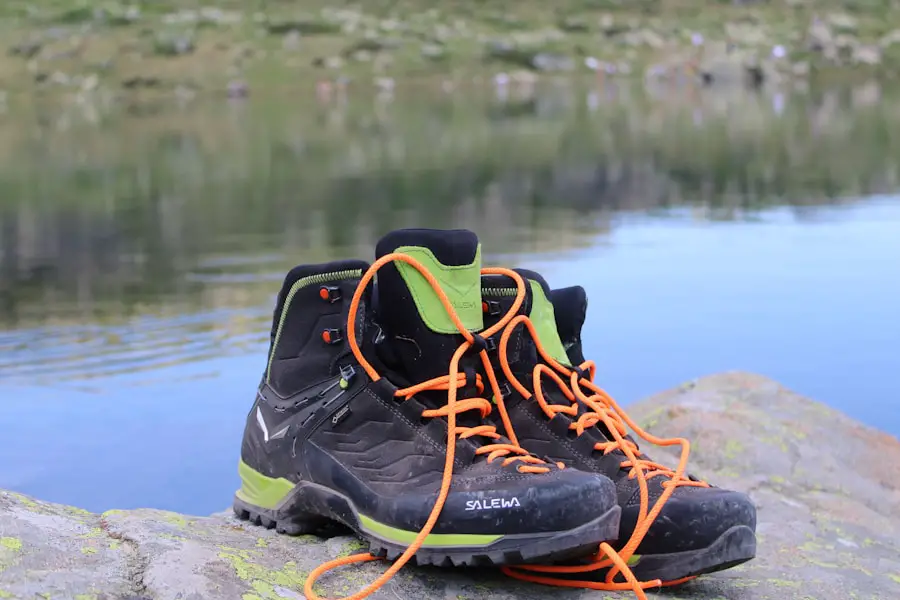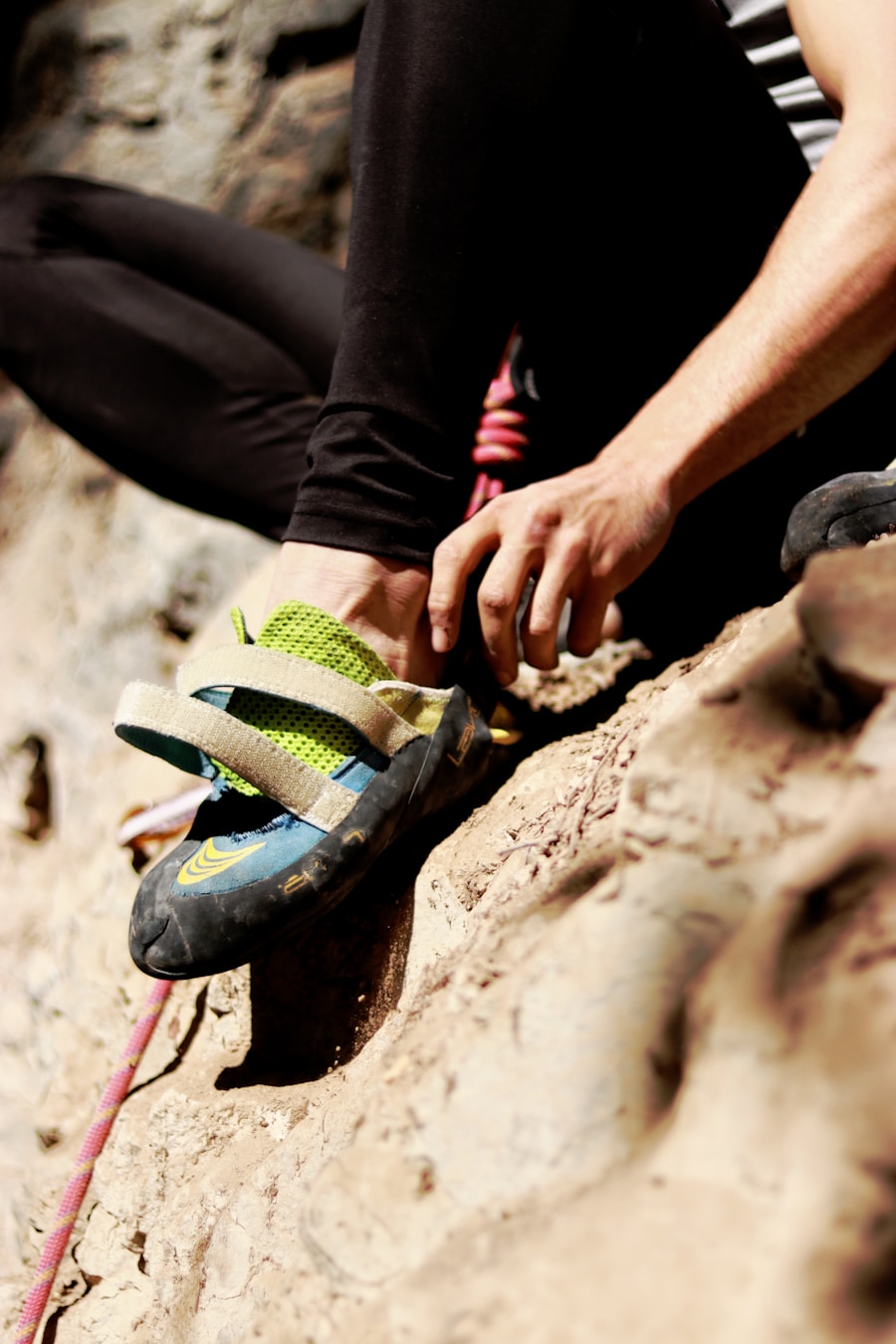Selecting the appropriate footwear is paramount for anyone embarking on a hiking adventure. The right shoes or boots can significantly influence comfort, stability, and overall performance on the trail. When considering hiking footwear, one must take into account the terrain, weather conditions, and the duration of the hike.
For instance, if you plan to traverse rocky paths or steep inclines, a sturdy pair of hiking boots with excellent ankle support and a rugged outsole is essential. These features help prevent injuries and provide traction on uneven surfaces. Conversely, for well-maintained trails or day hikes, lightweight hiking shoes may suffice, offering breathability and comfort without the bulk of heavier boots.
Moreover, fit is a critical factor in choosing hiking footwear. A shoe that is too tight can lead to blisters and discomfort, while one that is too loose may cause instability and increase the risk of twisting an ankle. It is advisable to try on shoes at the end of the day when your feet are slightly swollen, mimicking their condition during a hike.
Additionally, wearing the socks you intend to use while hiking during the fitting process can provide a more accurate sense of comfort and fit. Many outdoor retailers offer knowledgeable staff who can assist in finding the right footwear tailored to your specific needs, ensuring that you make an informed decision.
Key Takeaways
- Choose footwear that is appropriate for the terrain and weather conditions
- Select socks made of moisture-wicking material to keep feet dry and prevent blisters
- Regularly inspect and care for your feet to prevent issues such as blisters and calluses
- Gradually break in new shoes to avoid discomfort and blisters on the trail
- Use blister prevention products such as moleskin or blister pads to protect vulnerable areas on the feet
- Practice proper foot hygiene by keeping feet clean and dry to prevent fungal infections
- Adjust your hiking technique to reduce pressure on certain areas of the feet
- Listen to your body and take rest breaks when needed to prevent overuse injuries
Proper Sock Selection
The choice of socks is often overlooked but plays a crucial role in ensuring a comfortable hiking experience. The right socks can help regulate temperature, wick moisture away from the skin, and provide cushioning where it’s needed most. When selecting socks for hiking, it is essential to consider materials.
Wool, particularly merino wool, is a popular choice due to its natural moisture-wicking properties and ability to keep feet warm even when wet. Synthetic blends can also be effective, offering quick-drying capabilities and durability. In addition to material, the thickness of the sock should be matched to the type of footwear being used.
Thicker socks can provide additional cushioning and warmth but may not be suitable for tighter-fitting shoes. Conversely, thinner socks can enhance breathability and reduce bulk but may not offer enough padding for long treks. It’s also important to consider the height of the sock; crew-length socks can help prevent chafing from boot cuffs, while ankle-length socks may be more comfortable in warmer conditions.
Ultimately, investing in high-quality hiking socks can make a significant difference in foot comfort and help prevent blisters during long hikes.
Foot Care and Maintenance

Proper foot care and maintenance are essential for hikers who want to avoid discomfort and injuries on the trail. Regularly inspecting your feet for any signs of blisters, cuts, or other issues is crucial. After each hike, take the time to wash your feet thoroughly with soap and water, ensuring that you dry them completely, especially between the toes where moisture can accumulate.
Applying a good moisturizer can help keep the skin supple and prevent cracking, which is particularly important in dry or cold conditions. In addition to hygiene practices, maintaining toenail health is vital for hikers. Keeping toenails trimmed short can prevent them from hitting the front of your shoes during descents, which can lead to painful bruising or even loss of nails.
It’s advisable to cut toenails straight across rather than rounding the edges to minimize the risk of ingrown nails. For those who frequently hike long distances, considering foot care products such as antifungal powders or creams can help prevent athlete’s foot and other fungal infections that thrive in warm, damp environments.
Breaking in New Shoes
| Metrics | Value |
|---|---|
| Number of steps to break in new shoes | 1000 |
| Time taken to break in new shoes | 2 weeks |
| Distance walked to break in new shoes | 50 miles |
Breaking in new hiking shoes or boots is a critical step that should not be overlooked. New footwear often requires a period of adjustment for both the shoe and the wearer’s feet. Wearing new shoes for short periods before embarking on longer hikes allows your feet to acclimate to the footwear while also giving you an opportunity to identify any potential pressure points or discomfort areas.
This gradual approach helps prevent blisters and other foot ailments that can arise from wearing unbroken-in shoes on challenging trails. A practical method for breaking in new footwear involves wearing them during everyday activities such as walking around your home or running errands. Gradually increasing the duration and intensity of wear will help mold the shoe to your foot shape while allowing you to assess fit and comfort levels.
If possible, take your new shoes on shorter hikes or walks on varied terrain to simulate actual hiking conditions. This practice not only helps in breaking them in but also allows you to make any necessary adjustments before tackling more strenuous hikes.
Using Blister Prevention Products
Blisters are a common nuisance for hikers, but various products are available to help prevent them from forming. One effective strategy is to use blister prevention tape or pads on areas prone to friction, such as heels or toes. These products create a protective barrier between your skin and your footwear, reducing friction and minimizing the risk of blisters developing during long hikes.
Some hikers also find success with specialized blister prevention creams that can be applied directly to the skin before putting on socks and shoes. Another option is to consider using moisture-wicking liners beneath thicker hiking socks. These liners help manage moisture levels by drawing sweat away from the skin, which can reduce friction and keep feet dry.
Additionally, some hikers swear by using anti-chafing balms on areas that are prone to rubbing against clothing or gear. By incorporating these blister prevention products into your hiking routine, you can significantly enhance your comfort level on the trail and focus on enjoying your outdoor experience rather than dealing with painful blisters.
Proper Foot Hygiene

Maintaining proper foot hygiene is essential for hikers who want to keep their feet healthy and free from infections during outdoor activities. After each hike, it’s important to wash your feet thoroughly with soap and water to remove dirt, sweat, and bacteria that may have accumulated during your trek. Pay special attention to areas between the toes where moisture can linger and create an environment conducive to fungal infections like athlete’s foot.
In addition to washing your feet regularly, drying them completely is crucial in preventing issues related to excess moisture. After washing, use a clean towel to dry your feet thoroughly, ensuring that you get into all crevices between the toes. Applying foot powder or antifungal powder can also help absorb moisture and keep your feet dry throughout the day.
For those who frequently hike in wet conditions or during warmer months, investing in breathable footwear and moisture-wicking socks can further enhance foot hygiene by promoting airflow and reducing sweat accumulation.
Adjusting Your Hiking Technique
Adjusting your hiking technique can have a profound impact on foot comfort and overall performance on the trail. One key aspect is maintaining proper posture while hiking; keeping your back straight and shoulders relaxed helps distribute weight evenly across your feet and reduces strain on your joints. Additionally, using trekking poles can provide extra stability and support while allowing you to engage your upper body muscles more effectively.
Foot placement is another critical element of hiking technique that can influence comfort levels. Being mindful of where you place your feet—especially on uneven terrain—can help prevent slips and falls while also reducing unnecessary strain on your ankles and knees. Taking shorter strides on steep inclines or declines can help maintain balance and control while minimizing impact on your feet.
Practicing these techniques not only enhances safety but also contributes to a more enjoyable hiking experience by reducing fatigue and discomfort.
Knowing When to Rest
Recognizing when to rest during a hike is vital for maintaining energy levels and preventing injuries. Fatigue can lead to poor decision-making and increased risk of accidents on the trail; therefore, it’s essential to listen to your body’s signals. If you start feeling discomfort in your feet or legs or notice signs of fatigue setting in, it’s wise to take a break.
Finding a suitable spot to rest allows you to recharge physically while also giving you an opportunity to assess any potential issues with your footwear or technique. Incorporating regular breaks into your hiking routine not only helps prevent exhaustion but also enhances overall enjoyment of the experience. Use these moments to hydrate, snack on energy-boosting foods like nuts or energy bars, and take in the surrounding scenery.
Additionally, stretching during breaks can alleviate tension in your muscles and improve circulation, further enhancing comfort as you continue along the trail. By prioritizing rest when needed, you’ll be better equipped to tackle challenging sections of your hike while minimizing the risk of injury or discomfort.
If you’re looking to avoid blisters when hiking, one important factor to consider is the type of socks you wear. Merino wool travel socks are a great option for preventing blisters due to their moisture-wicking and odor-resistant properties. These socks are not only comfortable but also durable, making them a must-have for any hiking trip. For more tips on how to prevent blisters while hiking, check out this informative article on merino wool travel socks.
Love travel? Join Our Facebook Community For More Tips.
FAQs
What are blisters and why do they occur when hiking?
Blisters are small pockets of fluid that form on the outer layers of the skin. They occur when there is friction or rubbing against the skin, often caused by ill-fitting footwear or excessive moisture.
How can I avoid getting blisters when hiking?
To avoid getting blisters when hiking, it is important to wear properly fitting and broken-in hiking boots or shoes. Moisture-wicking socks can also help to keep your feet dry and reduce friction. Additionally, using blister prevention products such as moleskin or blister pads can provide an extra layer of protection.
Are there any specific techniques for preventing blisters while hiking?
Some specific techniques for preventing blisters while hiking include wearing two layers of socks to reduce friction, using lubricants such as petroleum jelly on areas prone to blisters, and taking regular breaks to air out and dry your feet.
What should I do if I feel a blister forming while hiking?
If you feel a blister forming while hiking, it is important to address it as soon as possible. You can apply a blister pad or moleskin to the affected area to reduce friction and protect the blister from further irritation. It is also important to keep the area clean and dry to prevent infection.
Are there any other factors that can contribute to getting blisters while hiking?
In addition to ill-fitting footwear and moisture, other factors that can contribute to getting blisters while hiking include excessive heat, rough terrain, and not taking regular breaks to rest and air out your feet. It is important to be mindful of these factors and take steps to mitigate their impact on your feet.
